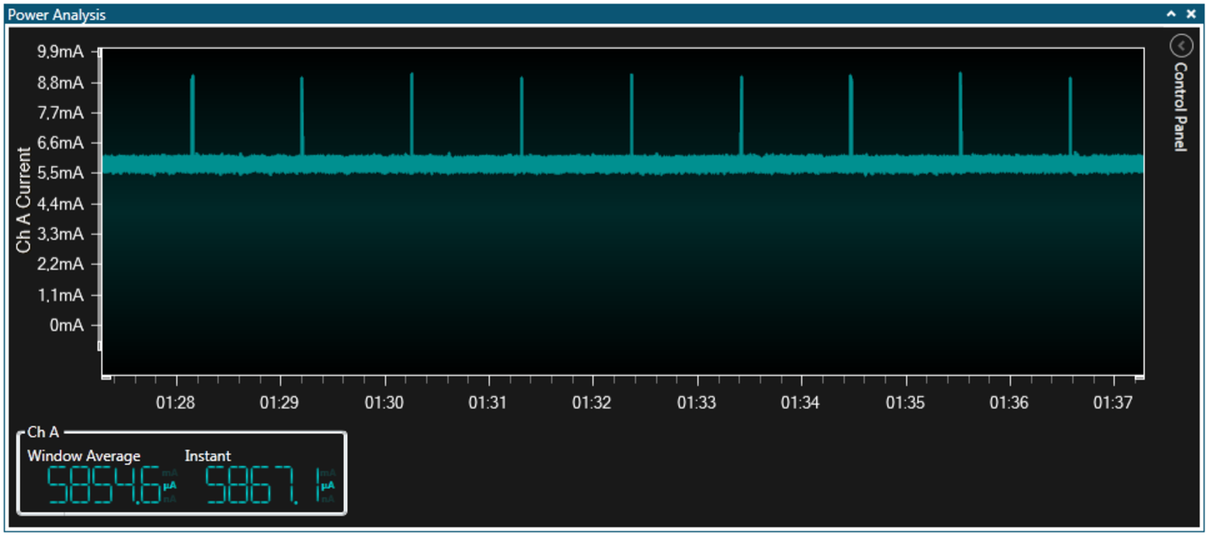Now let’s look at how we can reduce the power consumption of the application, and verify that it is improved.
A first thought might be to get rid of the delay loop and run the LED blinker of a timer interrupt. In addition, a simple example like this does not need to run at high-speed, so we can use the clock prescaler to run slower. The code below is included in project low_power_102.
#include<avr/io.h>#include<avr/interrupt.h>// Timer 0 ISR
ISR (TIMER0_OVF_vect){if(PORTB ==0x00){// LED is OFF, turn it on
PORTB =(1<<5);// Shortened timeout for on cycle
TCNT0 =0x102;}else{// LED is ON, turn it off
PORTB =0x00;}}intmain(void){// Change the clock prescaler
CLKPR =(1<< CLKPCE);// Scale by DIV64
CLKPR =(1<< CLKPS2)|(1<< CLKPS1)|(0<< CLKPS0);// Port B5 to output
DDRB =(1<<5);// Timer0 DIV 1024
TCCR0B =(1<< CS02)|(1<< CS00);// Overflow interrupt enable
TIMSK0 =(1<< TOIE0);// Interrupts onsei();// Do nothingwhile(1);}Todo:
- Build the project/solution (F7)
- Program the application into the target device using Start Without Debugging (Ctrl+Alt+F5)
- Switch to Data Visualizer to see the results

The plot above was captured while reprogramming the target. What can we see
from this plot?
- Two negative power pulses are seen (the device is pulled into Reset)
- Four positive pulses are seen (read ID, erase, program Flash, and verify Flash)
- The new application starts to execute
Leaving the application to run for a few seconds should give you a plot similar to this one:

What can we see from this plot?
- The kit now draws about 6 mA with the LED OFF
- Current draw increases to about 9 mA when the LED is pulsed ON
- The 1% duty cycle still seems approximately correct
Result: Power consumption has been significantly improved
by clocking the device slower.
Important: Because this
example prescales the clock to 8 MHz/64, the ISP programming clock must be set to
less than 32 kHz to be below 1/4 of the main clock when attempting to reprogram the
device!